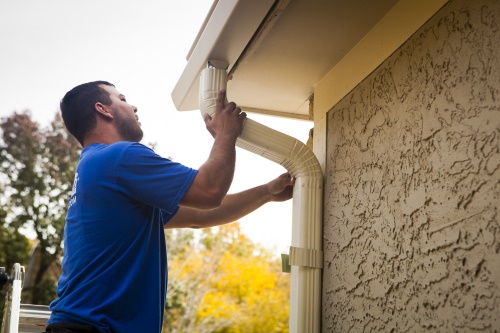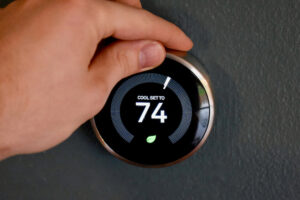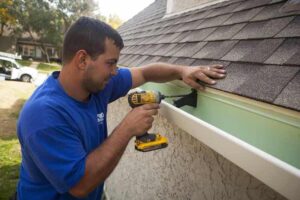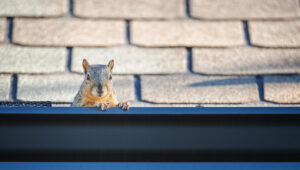Most gutter systems have the same components: the gutter itself, downspouts, elbows, and end caps. Each part of the gutter system plays an integral role in draining precipitation like rainwater and meltwater away from home, protecting it from drainage issues.
One of the most important parts of a gutter system is the downspout. Do you know exactly how they work and what role they play in your gutter system? Do you know how to properly clean and maintain the downspouts so they effectively drain water away from your home? If not, no worries! K-Guard St. Louis is here to teach you everything you need to know. Keep reading to learn everything you need to know about downspouts so you can keep them working as efficiently as possible.
What is a Downspout?
If you’re unfamiliar with which part of the gutter system is the downspout, it’s easy to identify. Downspouts are the part of a gutter system that is attached to the bottom of the gutter. The downspout sits vertically to the sides of the home and connects to the gutter. There are several found around the exterior of a home, often placed every 30-50 feet.
Downspouts are most often constructed of steel and aluminum. Other materials like vinyl and copper are available but aren’t as common. Downspouts vary in size, however, most are 2×3 inches and 3×4 inches.
What Role does a Downspout Play in a Gutter System?
There are many different types of gutter systems available on the market, however, all downspouts work the same. Downspouts exist to collect and point storm and meltwater that flows from the gutter and into the downspout several inches away from the home, draining the water away from the home’s foundation.
How does a Downspout Connect to a Gutter?
While downspouts function the same regardless of the style of the gutter system, how they’re connected to the gutter varies depending on the style of the gutter system. Traditional half-round gutter systems have the downspout connected to the gutter trough then bracketed to the side of the home. The gutter system is often mounted to the fascia boards or roof. When a gutter system is mounted to the home’s siding or roof then damage like separation and sagging can occur over time.
The K-Guard Leaf Free Gutter System is different. Our gutter system is a complete, seamless system that mounts above the floodplain. K-Guard will never void your roof’s warranty, unlike many other gutter systems.
Can Downspouts Become Clogged?
As previously mentioned, downspouts connect to the gutter itself, draining that water away from the home. Because they connect right to the gutter, they can easily become clogged if they’re not properly cleaned and maintained.
Half-round gutters can easily become clogged; trees that surround the home or high winds will deposit debris right into the gutter system. Clogs can also occur as a result of small birds, insects, or animals that will use the downspout to nest or travel into your gutter system. Small pests make nests out of debris like leaves, pine needles, silt, and mud, things that are often the cause of clogged gutters.
When debris is left to accumulate over time, stormwater and meltwater aren’t able to flow through the gutter system freely, resulting in overflowing gutters and possibly sagging gutters. Overflowing and sagging gutters can result in damage and costly repairs for homeowners like leaks, foundation damage, and roof damage.
How can I Keep My Downspouts Free of Clogs?
If your home has a traditional, half-round gutter system, you’ll want to clean it often to keep up with debris that could cause clogs. Cleaning your gutter system at least three times a year can help remove debris. You can also trim the trees on your property if they’re close to your roof.
Maintaining and cleaning downspouts is relatively easy and starts with cleaning your gutters. To start, make sure you wear gloves to protect your hands from any sharp debris or nests you may encounter. In addition to gloves, you’ll need a ladder, scoop, bucket, hose, and maybe even a plumber’s snake. Follow these steps to clean your downspouts:
- Remove all of the debris from the gutters
- Flush out the gutters with water to remove any build-up of dirt or rocks
- To clean a clogged downspout, place a foot or two of a plumber’s snake into the corners where the gutters meet the downspout and remove leaves and debris
- Follow up with flushing the downspout out with a garden hose to further remove any dirt and debris
Cleaning gutters and trimming trees are temporary solutions to fix clogged gutters. Installing the K-Guard Leaf Free Gutter System is a permanent solution that eliminates clogged gutters for the life of the home. Because our full system is a seamless design that has a curved hood, debris can simply slide off rather than enter the system. Only water adheres and enters the system through a narrow opening – leaves and other debris will never clog your gutters again!
K-Guard is the only gutter installation company in the St. Louis area to use the most durable and corrosion-free aluminum for a leaf-free gutter system. Our large downspouts allow for more rain and meltwater to be pushed further away from your home than traditional gutter systems allow (a minimum of 23 inches of rain per hour). To make the switch to K-Guard today, schedule your free estimate online or call (636) 389-4881.




